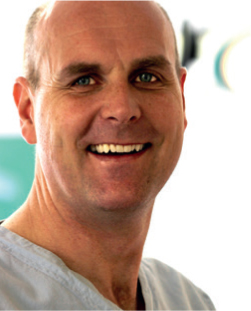Article

My (nearly) 30 years in clinical practice has coincided almost exactly with a ‘minimally invasive revolution’ in the field of restorative dentistry. In part, this has been led by innovations in adhesive technology and by continuous advances in the use of direct composite to treat a wide range of clinical problems.
Having placed only one (very poor!) posterior composite as an undergraduate, it was a delight to be invited to write an ‘update’ paper entirely devoted to that subject and to guest edit the first ever ‘completely composite’ edition of Dental Update.
I would like to take this opportunity to sincerely thank all the authors who have contributed to this edition. They were hand-picked as representatives of various stages in the evolution of direct composite techniques: from legendary pioneers Adrian Shortall and Professors Trevor Burke and Nairn Wilson, to the youngest generation of ‘composite natives’, represented by Richard, Andrew, Dipesh and cover illustrator Minesh Patel, who have raised the standard of British direct aesthetic dentistry to an art form.
The authors were selected according to the following criteria:
*The only exception to this rule is South Africa-trained Jansie Van Rensberg, whose outstanding clinical skill and exemplary teaching ability made him the number one choice to write about fibre-reinforced composites.
The subject range of these papers is designed to demonstrate the array of contemporary applications for composite resins, from minimally invasive cosmetic procedures to the complete rehabilitation of worn dentitions.
Logically, the composite issue opens with a review of recent developments in resin-based composite materials by Steve Bonsor, one of the UK's most published GDPs and a vastly experienced undergraduate and postgraduate educator on the practical application of dental materials. Following this, Richard Field's beautifully illustrated paper describes the latest techniques for the minimally invasive management of white lesions using resin infiltration. Next, I team up with my mentors, Adrian Shortall and Trevor Burke, and composite prodigy Dipesh Parmar to provide a detailed update of the latest materials, equipment and evidence-based clinical techniques for the restoration of posterior teeth with resin composite. (The authors would also like to thank our friends at Radboud Dental School in Nijmegen, Holland, who continue to kindly share their revolutionary blueprint for the teaching of posterior composite techniques). Our next author, Jason Smithson, has done as much as any GDP to raise the profile of British aesthetic dentistry on the international stage. His paper provides an anatomy masterclass for the functional and aesthetic restoration of occlusal surfaces. We then switch to anterior composites with past president of the British Academy of Cosmetic dentistry (BACD), Andrew Chandrapal, who provides an outstanding step-by-step guide to polychromatic layering techniques. Nairn Wilson follows, taking an historical look at one of the most significant advances in restorative dentistry, as he describes the introduction of visible light curing and how British researchers remain at the forefront of innovation in this field. To further demonstrate how resin-based composite has transformed clinical practice, Trevor returns to describe how the latest composite luting resins form a central component of indirect restorative procedures. Our final two papers demonstrate how dedicated, experienced experts have extended the clinical applications of resin composite materials. In a companion piece to his 2015 Dental Update article on fibre-reinforced, composite, resin-bonded bridges, Jansie van Rensburg describes the practical stages for the successful management of mobile teeth using fibre-reinforced, composite splints. Then, pushing the boundaries even further, Dipesh Parmar, in another superbly illustrated clinical case report, demonstrates a predictable, cost-effective and time-efficient method for the conservative, full-mouth rehabilitation of patients with tooth wear. This paper reinforces a recurring theme: that rather than thinking of composite as a replacement for amalgam which in my opinion still remains an excellent option for some molar cavities), it should be more correctly thought of as a replacement for more biologically destructive, indirect techniques, whose irreversible sacrifice of tooth tissue and mode of failure often leaves no ‘Plan B’ when problems arise. Finally, a technique tip describes an innovative method for making a customized composite shade guide to help satisfy patient and professional demand for high-quality aesthetic restorations.
I hope you enjoy this ‘composite edition’ of Dental Update. In an era when there is an unprecedented level of negativity within the dental profession, I would argue that there has never been a better time to be a restorative dentist and that optimizing the direct composite procedures described within this issue will continue to bring great rewards for patients and clinicians alike.

